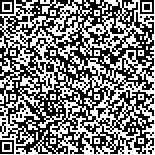下载中心
优秀审稿专家
优秀论文
相关链接
摘要

地质构造信息对地质矿产调查具有重要意义,野外实测和光学遥感等常规手段在一些地表浅覆盖区获取的地质构造信息十分有限,而合成孔径雷达(SAR)对地表具有一定的穿透性,在探测地表浅层覆盖区域的地质构造特征中具有独特优势。利用高分三号(GF-3)全极化影像,在典型的地表浅层覆盖区域,开展了断裂构造等信息的解译探索,提出了一种地表浅覆盖区域地质构造解译的新方法。首先对西藏改则、林芝、贵阳、北京千家店等4个研究区内的断裂构造和环带构造进行分析;接着,提出了GF-3全极化影像用于浅覆盖区地质解译的处理流程,通过引入DEM数据对GF-3影像进行地形校正,充分利用微地形微地貌特征,并采用不同极化方式的RGB合成,增强了影像的判读性,并进行地质构造解译;最后,将解译结果与1∶5万实测数据进行对比,断层的位置和方向与实测结果基本一致,同时获取了大量野外实测未能探明的浅覆盖层以下的断层信息,进一步丰富了研究区的地质构造信息。结果表明,GF-3全极化影像可用于浅覆盖区的地质构造解译,并且具有野外实测和光学遥感等常规手段所不能替代的独特优势。
Synthetic aperture radar (SAR) has been adopted in this study to compensate for the shortage of obtaining structural information below the meadow covering. Structural information is obtained through field surveying and special remote sensing images. Influenced by weathering and meadow covering, the structural information in the meadow covering environment acquired through these methods is limited. Given its long wavelength, SAR has the advantage of penetrability, which can help in detecting structural information below the meadow covering. The technology can efficiently compensate for the disadvantage of spatial remote sensing and field observing in meadow covering area. This study aims (1) to establish a new method of structural interpretation in meadow covering based on GaoFen (GF)-3 Pol-SAR images; (2) to verify the application of GF-3 Pol-SAR images in four different atmosphere districts, namely, Gerze in Tibet, Nyingchi in Tibet, Qianjiadian in Beijing, and Sinan County in Guizhou Province; and (3) to interpret the faults and circular structures systematically in these areas and verify the authenticity and accuracy of interpretation through GF-3 SAR images by comparing with the 1∶50000 field mapping.
GF-3 C-band SAR images have been used in detecting geology structures in this study because of its penetrability. GF-3 SAR images have the most observing modes worldwide. GF-3 full polarization mode images are utilized in this study to optimize the use of information in different polarization modes. To use the GF-3 SAR images effectively and accurately, the data processing procedure, including focusing, multi-looking, filtering, and geocoding, has been completed. The effect from speckle in the images can be effectively reduced by Lee filtering. Geocoding can ensure the accuracy of spatial information. The 90 m SRTM DEM data are obtained in the geocoding process to eliminate the topographic influence, which helps in optimizing the use of micro-topographic features to interpretation structures. On the contrary, the structures have different features in various polarization images. To optimize the use of features in different polarization images, the R-G-B combination of various polarization directions is used in the study. As the cross polarization has more peak features than the straight polarization, the cross polarization images have been merged as R channel and the straight polarization images have been merged as G and B channels. The interpretation capability of GF-3 SAR images has been increased by combining different polarization images. In this work, four study areas in different covering environments have been selected. The interpretation keys of faults and circular structures in study areas can be established on the basis of the combination of different polarization images, by analyzing the unique color, topography, and hydrographic features of faults and circular structures. The structural features have been systematically interpreted on the basis of the interpretation keys in four study areas. To analyze the authenticity and accuracy of interpretation through GF-3 SAR images, the structural features have been compared with the faults in 1∶50000 mapping.
The color combination of different polarization images in four study areas has been acquired through data processing. Interpretation keys of faults and circular structures in study areas have been established by analyzing the unique color, topography, and hydrographic features of faults and circular structures. The structures in study areas have been interpreted systematically. Structural feature maps interpreted through GF-3 SAR images in study areas have been drawn. The faults in 1∶50000 field maps are contained in the structures interpreted through GF-3 SAR images, compared with 1∶50000 field mapping. The position of faults in 1∶50000 mapping fits the position of faults interpreted through GF-3 SAR images. The number of faults interpreted through GF-3 SAR images is largely increased.
In this study, SAR has been adopted to detect geology structures. GF-3 SAR images have been used in four study areas, namely, Gerze in Tibet, Nyingchi in Tibet, Qianjiadian in Beijing, and Sinan County in Guizhou Province. By investigating structural interpretation through GF-3 SAR images in study areas, the following conclusions can be obtained: (1) A new method of structural interpretation in meadow covering based on GF-3 Pol-SAR images has been established. (2) The interpretation keys of faults and circular structures in four study areas, namely, Gerze in Tibet, Nyingchi in Tibet, Qianjiadian in Beijing, and Sinan County in Guizhou Province, based on GF-3 SAR images have been established. (3) The faults and circular structures in study areas have been interpreted systematically through GF-3 SAR images. The faults in 1∶50000 map have been contained in structural features interpreted through GF-3 SAR images, compared with 1∶50000 field mapping. The number of faults interpreted through GF-3 SAR images is largely increased. These increased faults are mostly structures below the meadow covering that cannot be observed through field work and special remote sensing images. The structural interpretation in four study areas demonstrates its authenticity and accuracy through GF-3 SAR images. The method based on GF-3 SAR images can effectively compensate for the disadvantage of field work and spatial remote sensing in meadow covering.

